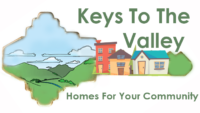The transportation network is a resident’s connection to their community. The location and design of new homes and neighborhoods impact residents’ mobility, quality of life, and cost of living. High transportation costs contribute to affordability challenges for many greater Upper Valley households.
Promoting affordable transportation access starts with land use policy. Investments in creating pleasant pedestrian environments in villages and improving mobility for all users are also important.
Denser residential areas located in or near community centers provide residents with shorter trips and lower-cost transportation options, such as walking or public transit. Sprawling, low-density housing increases travel distances, promotes travel exclusively by car, and creates more road infrastructure that municipalities are liable to maintain. Using thoughtful, coordinated land use policies, transportation policies (such as Complete Streets policies), and transportation infrastructure investments (e.g., sidewalks, bus stops), communities can ensure affordable and accessible transportation for all residents. (See the housing and transportation handout)

